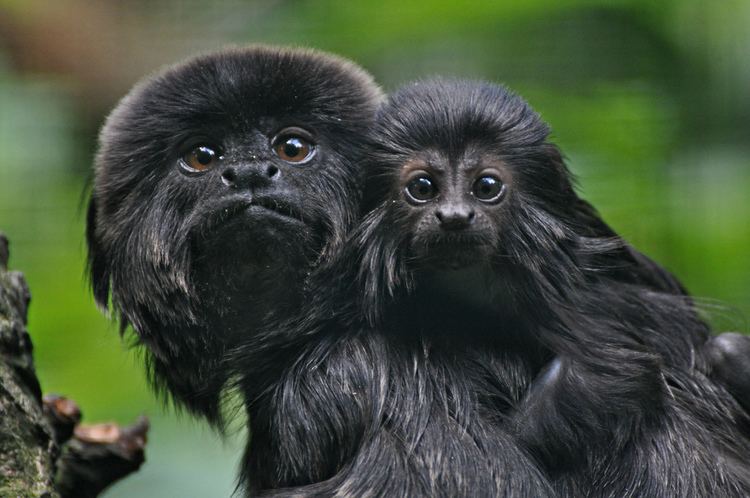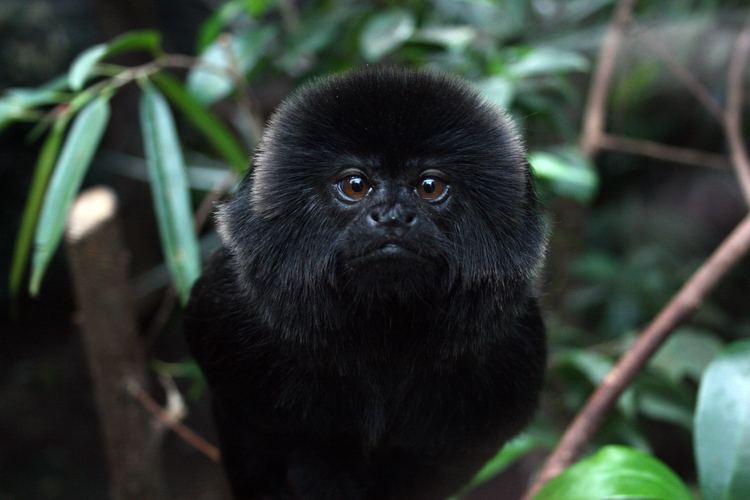Scientific name Callimico goeldii Phylum Chordata Order Primate | Rank Species Higher classification Callimico | |
Genus CallimicoMiranda Ribeiro, 1922 Similar Primate, Pygmy marmoset, Tamarin, Callitrichidae, Callithrix | ||
On location the goeldi s marmoset
Goeldi's marmoset or Goeldi's monkey (Callimico goeldii) is a small, South American New World monkey that lives in the upper Amazon basin region of Bolivia, Brazil, Colombia, Ecuador, and Peru. It is the only species classified in the genus Callimico, and the monkeys are sometimes referred to as "callimicos".
Contents

Goeldi's marmosets are blackish or blackish-brown in color and the hair on their head and tail sometimes has red, white, or silverly brown highlights. Their bodies are about 8–9 inches (20–23 cm) long, and their tails are about 10–12 inches (25–30 cm) long.

Goeldi's marmoset was first described in 1904, making Callimico one of the more recent monkey genera to be described. In older classification schemes it was sometimes placed in its own family Callimiconidae and sometimes along with the marmosets and tamarins in the subfamily Callitrichinae in the family Cebidae. More recently, Callitrichinae has been (re-)elevated to family status as Callitrichidae.

Females reach sexual maturity at 8.5 months, males at 16.5 months. The gestation period lasts from 140 to 180 days. Unlike other New World monkeys, they have the capacity to give birth twice a year. The mother carries a single baby monkey per pregnancy, whereas most other species in the family Callitrichidae usually give birth to twins. For the first 2–3 weeks the mother acts as the primary caregiver until the father takes over most of the responsibilities except for nursing. The infant is weaned after about 65 days. Females outnumber males by 2 to 1. The life expectancy in captivity is about 10 years.

Goeldi's marmosets prefer to forage in dense scrubby undergrowth; perhaps because of this, they are rare, with groups living in separate patches of suitable habitat, separated by miles of unsuitable flora. In the wet season, their diet includes fruit, insects, spiders, lizards, frogs, and snakes. In the dry season, they feed on fungi, the only tropical primates known to depend on this source of food. They live in small social groups (approximately six individuals) that stay within a few feet of one another most of the time, staying in contact via high-pitched calls. They are also known to form polyspecific groups with tamarins, perhaps because Goeldi's marmosets are not known to have the X-linked polymorphism which enables some individuals of other New World monkey species to see in full tri-chromatic vision.

The species takes its name from its discoverer, the Swiss naturalist Emil August Goeldi.
